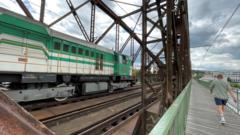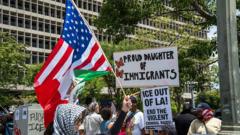As the vibrant city of Copenhagen serves as a backdrop, Nella Larsen—a prominent figure of the Harlem Renaissance—experiences a complex intersection of race and identity. In her 1928 novel, “Quicksand,” her protagonist, Helga Crane, navigates a world that looks upon her “dark, alien appearance” with curiosity and scrutiny. More than nine decades later, despite a growing multicultural demographic, the essence of Larsen's Copenhagen remains present.
Today, the thoroughfares echo with the same rhythm of cyclists that Helga once learned to avoid. The picturesque architecture continues to adorn the city; in fact, Copenhagen was recently designated the World Capital of Architecture in 2023, showcasing its enduring charm. The city, often cited among the happiest in the world, now embraces individuals from diverse backgrounds, highlighting a contrast with the era of Larsen’s youth.
While Larsen's daily life in Denmark isn't extensively documented, biographical insights suggest that her experiences informed her literary voice. One notable revelation comes from biographer George Hutchinson, who identified a passenger manifest capturing Larsen’s travels, while genealogist Shari Jensen uncovered connections between Larsen’s relatives and those depicted in her narrative.
Born to immigrant parents, Mary Hanson from Denmark and Peter Walker from the Danish West Indies, Larsen was initially raised in a working-class Chicago neighborhood. After spending formative years in Denmark, she returned to the US in 1912, where she forged her identity as a writer. “Quicksand,” which deftly intertwines aspects of her life in Copenhagen, garnered critical acclaim, including praise from the influential sociologist W.E.B. DuBois.
Through Nella Larsen’s literary lens, the intersection of history, identity, and culture in Copenhagen remains a critical chapter of the Harlem Renaissance, inviting reflection on how the personal shapes the narrative in transformative ways.





















